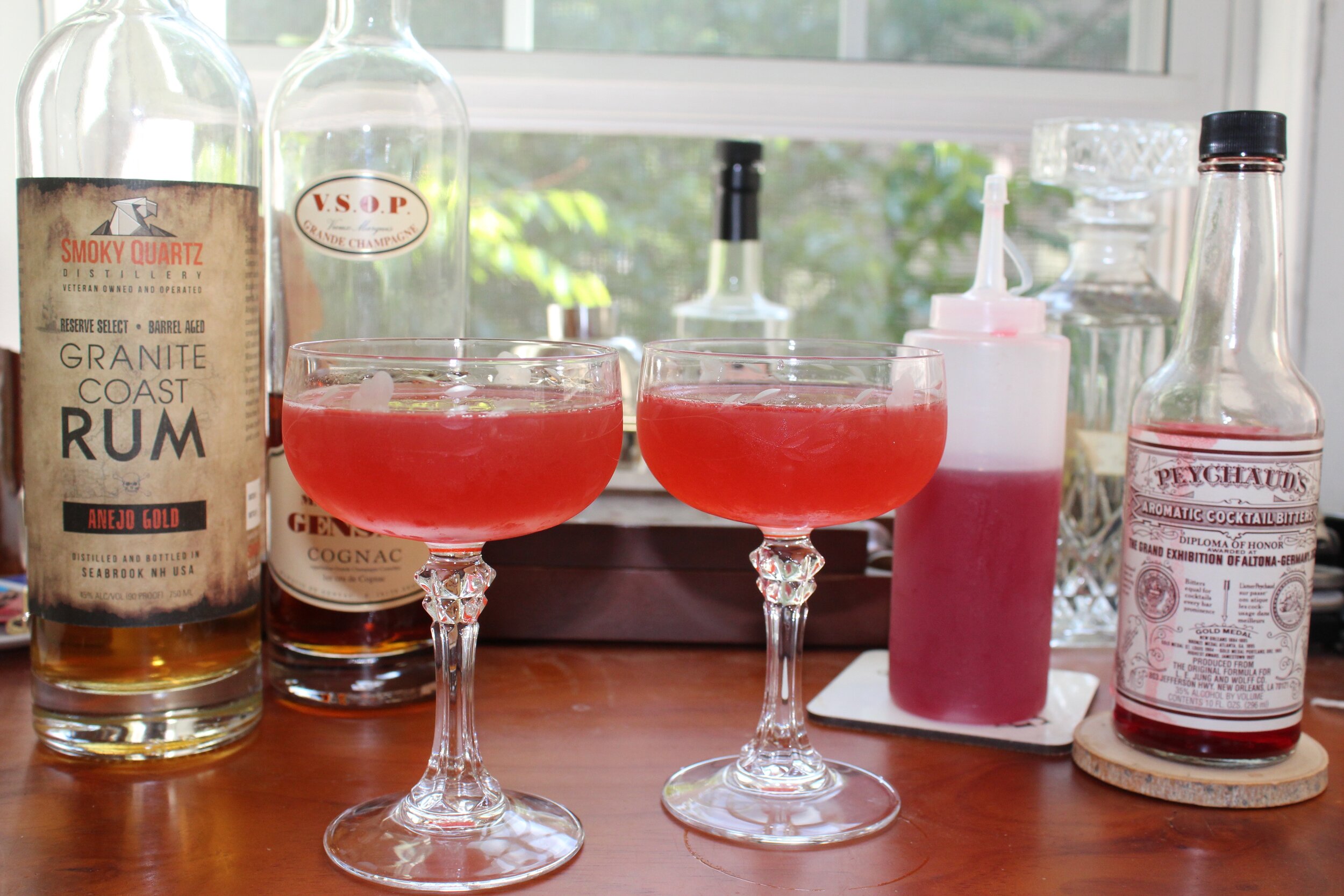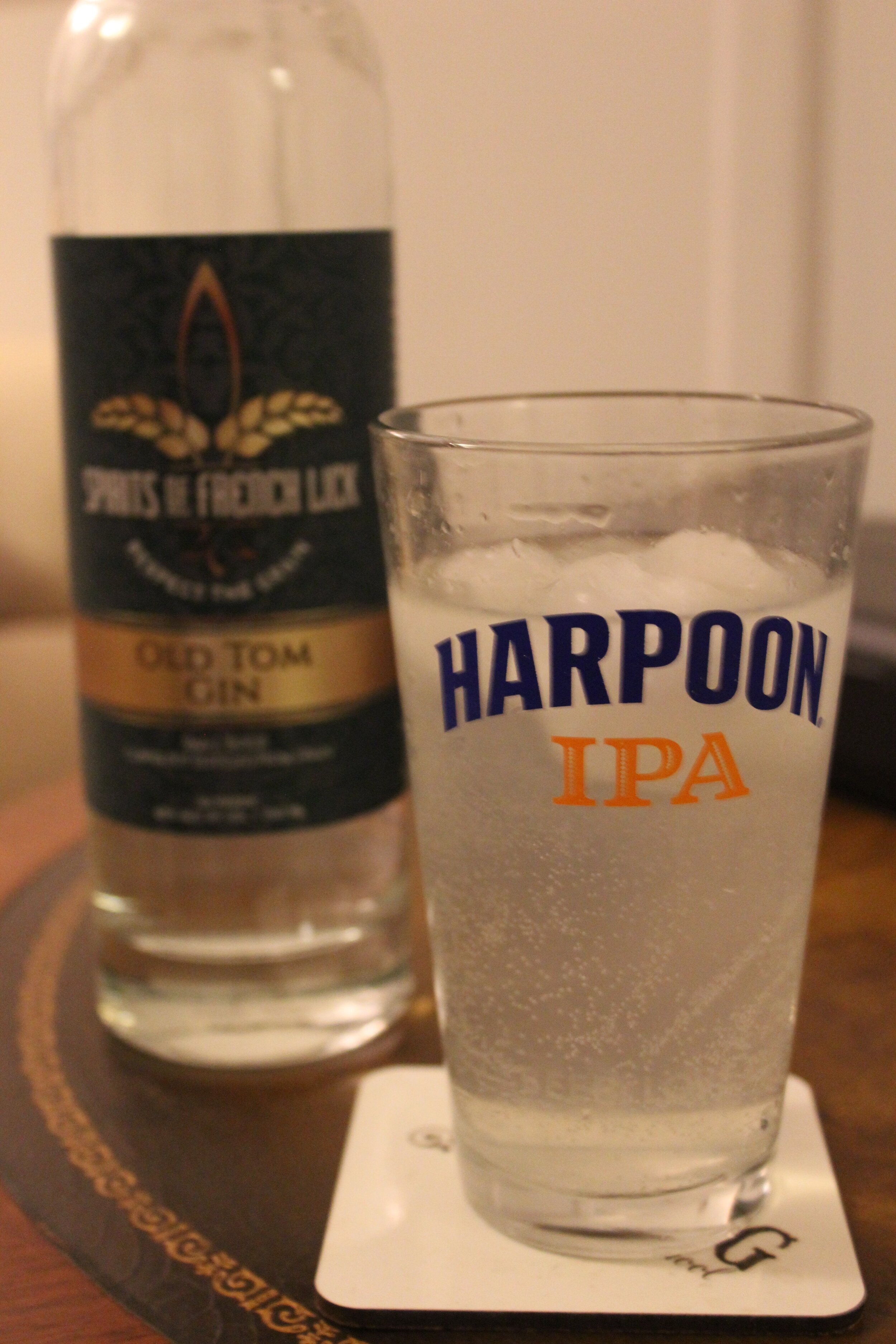Daiquiri
2 oz. White Rum
3/4 oz. Fresh Lime Juice
3/4 oz. 1:1 Simple Syrup
Shake. Strain into a chilled cocktail or coupe glass.
That’s the recipe I’m expecting to print in the new edition of Classic Cocktails. But on the night that I tested the Daiquiri, here’s what I actually made:
No Lie, The Best Daiquiri I’ve Ever Made
2 oz. Unaged Rum (House Blend)
3/4 oz. Fresh Lime Juice
1/2 oz. 1:1 Simple Syrup
1 tsp. 2:1 Demerara Simple Syrup
Shake about 1.5x longer than you otherwise would. Strain into a chilled coupe glass.
Let’s review the differences and get to my questions for home tasters from there.
First, I hadn’t meant to use a house blend of rums for the base, but I had (I’d guess) about 1 3/4 oz. of the Wiggly Bridge rum left, so I topped the jigger up with Privateer. Honestly, I think that was a good move, but it’s not necessary to have a house rum blend to make a good Daiquiri.
But let’s investigate our rum terminology a bit. “White,” “silver,” and “light” as rum descriptors are extraordinarily common and basically useless. And so, I’m afraid, are “amber,” “gold,” and “dark.” All of these terms describe the color of the rum, but rum is unusual among spirits in that the color has relatively little to do with the flavor.
One would expect a clear rum to be unaged, but it’s actually very common for them to be aged for 2-3 years* in oak barrels and then filtered before bottling. This is a part of the tradition especially among Hispanophone rum-producing countries - even the lauded white rums of Cuba are generally aged and filtered - and if done well, the filtering process takes the color without stripping away interesting flavor. But that just means the rums will play differently in cocktails than unaged rums would, acting at least somewhat more like lightly-aged rums.
Speaking of which, color is also pretty meaningless in gauging the flavor of brown rums, because color is frequently added. For the most part, this is again done in a way that is supposed to be flavor-neutral: just enough caramel coloring to make a straw-colored aged rum look “amber,” but not enough to be perceptible (caramel coloring has a bitter taste, so the producers really don’t want you to be able to pick it out). But there are instances of unaged rums being colored in the same way, and of course there are many producers throughout the world whose rums are actually, y’know, colored by their aging process and nothing else.
“Dark” rums have the starkest intra-category contrast. Some pretty dark rums get that way from extended wood exposure. But even if a very dark rum has spent a long time in barrels, chances are it gets its hue primarily from added coloring. Often this comes in the form of a big dollop of added molasses, which does change the rum’s flavor, as well as its viscosity. I follow the brilliant recommendation of Martin Cate in Smuggler’s Cove (if you like rum, tiki, cocktail history, or good drinks, pick up a copy to devour while self-isolating) in describing this last group as “black rums,” because they actually are defined by their color. In recipes, you’ll sometimes want to specify a rum with that consistency and profile, but the existing terms are unhelpful. “Dark” can also mean aged and unsweetened/uncolored rums, while the term “blackstrap rum” that has gained some currency is equally useless, because basically all rum that is distilled from molasses is distilled from blackstrap molasses, whether or not more is added for color after distillation.
In Classic Cocktails, I plan to dispense with this nonsense and call specifically for unaged, aged, or black rum, with further precision by island or style as necessary - e.g., “unaged Martinique rhum agricole.”
So, why in the above Daiquiri recipe did I say ‘white rum’? Because consumers mostly don’t know that these color terms are meaningless yet. I have every expectation that some of them will use aged and filtered ‘white’ rums in making the unaged rum recipes. And so, to the…
First Question for Home Testers: I’d like you to try this Daiquiri with whatever sort of white rum you currently have in your house. If you do this, contact me and let me know how you liked the recipe, and whether your white rum is actually unaged or aged and filtered (or you’re unable to determine, in which case please also share the brand name). I believe the recipe will hold up fine regardless.
“But,” I hear you cry, “the title of this post implies three versions of the Daiquiri. What was that about?” I’m glad you asked!
The other big change I made to the Daiquiri recipe for my own preparation, which I think was probably the biggest game-changer in terms of flavor, was to incorporate a teaspoon of 2:1 Demerara simple syrup in addition to the regular 1:1 stuff made with white sugar. It was a stunningly good flavor choice. It also feels kind of fastidious to publish a recipe for a fairly common cocktail that calls for two different kinds of homemade sugar syrup.
So, I’d like you guys to try some variations. The one I led off with, with 3/4 oz. of 1:1 simple syrup, should get you to a similar place in terms of overall sweetness as 1/2 oz. 1:1 simple syrup plus 1 tsp. 2:1 Demerara. I know the second one is really good. I invite you to make it if you have or can easily prepare both kinds of simple syrup. But I need feedback more on the first one, because that’s the one I expect most of the book’s readers will actually end up making.
Additionally, if you’re feeling particularly helpful and/or experimental, I’d like you to try version number three:
The Reverse-Simó-Sidecar Daiquiri
2 oz. White Rum
3/4 oz. Fresh Lime Juice
1/2 oz. 1:1 Simple Syrup
Shake. Strain into a chilled cocktail or coupe glass rimmed with sugar.
See, Joaquin Simó advises adding a barspoon of rich Demerara simple syrup to the Sidecar to get it to balance properly - a problem so famously tricky that many contemporary bartenders have written off the Sidecar entirely. Meanwhile Jason Kosmas and Dushan Zaric, in the Employees Only cocktail book Speakeasy (the first good cocktail guide I ever owned, and another excellent read if you’re stuck at home) come out in favor of the semi-traditional sugar rim on the Sidecar for the same reason: it needs that extra touch of sweetness.
In testing the recipes for the new edition of Classic Cocktails, I learned that the Beachcomber also semi-traditionally has a sugared rim, and discovered that a bit of added sugar really does improve the drink. So while it’s not particularly traditional in the Daiquiri, I’d like you to help me test my theory that we can reverse-engineer the effects of the teaspoon of 2:1 Demerara syrup by sugaring the rim of the glass. Which brings us to the…
Second Question for Home Testers: If you can try the first Daiquiri (with 3/4 oz. 1:1 simple syrup), I’d love for you to also try the third (with 1/2 oz. 1:1 simple syrup) and let me know how they compare. Feedback on either independent of the other is of course still welcome.
Never rimmed a glass before? It’s easy. You want to moisten the lip of the glass first, which is best accomplished by getting it nice and cold and using condensation to your advantage. You can put it in the freezer for a little bit or fill it up with ice and wait. If you’re feeling impatient, you can also run an ice cube or a wedge of lime around the edge until it’s sufficiently wet (though note that using the lime will affect the flavor). Then, pour some plain white sugar into a dish. If the dish is large enough, simply overturn the glass into the sugar, press down, and give it a spin or two. Sugar should cling to the glass when you pick it back up. If you have a smaller dish, press one side of the glass into the sugar instead and give it a few gentle spins until the rim is coated. That’s it! You can also use this technique with salt for a Margarita.
Notes
(*) 2-3 years is common, but there are other options, too: Bacardi Superior is aged for a minimum of 1 year and then filtered, while Flor de Caña’s white rum is aged for 4 - and they also have an amber rum with the same age statement.


















